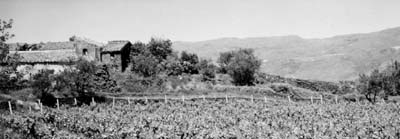
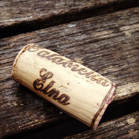
“The Magma in the soul”
Tradition
From 4 generations, the Calabretta family has grown grapes according to the
century-old traditions of Etna; minimizing vineyard treatments, (only low
quantity of “Copper Sulphate” & “Sulphrum”). We make the “green manure”, the “mulch”,
“plowing”, “strictly pruning the vines”. Our head pruned vineyards are
delineated by volcanic stone walls that crisscross our landscape.
The volcanic soil of our area, combined with the dramatic temperature
differential between day and night & the high solar daily yields grapes of
singular expression when harvested in the middle of October only perfectly ripe.
Our wines’ flavors and aromas are a marvelous expression of this special part of
Italy.
Our vineyards have evolved naturally and the vines are intermingled with olive
trees and fruit orchards. When in our vineyards, you smell the wild grasses and
there is a strong sense of terroir. You can hear the chirping of crickets and
the buzzing of bees, wasps & little hornet. Wild rabbits scamper through our
vineyards and, occasionally, love to eat the young leaves of the newly planted
vines ... but this is nature!
In our vineyards, depending on the season, you can find fichi d’India (prickly
pear), sparagogne (a bitter variety of asparagus) and cavolicelli (an indigenous
type of rappini) that we harvest for family and friends. At higher elevations,
you can find brooms and mountain flowers. And all the time: we protect and
maintain the landscape of our dry-set lava stone walls and clear the ancient
pathways to our vineyards.
The company's tradition is rooted in this land, in fact, already in the early
1900s we were producing and exporting large quantities of wine. At the same time,
the town of Passopisciaro arose to accommodate the many peasants who were
arriving en masse looking for work. This lead to the construction of large
millstones “palmenti” , and the emergence of many small producers. Today, a
century later, Etna is renowned for its wines of character and tradition.
History of the Calabretta winery
In the early-1900s, Gaetano Calabretta married “donna Grazia”, and purchased
vineyards in addition to those he inherited with his marriage. In the years
between 1920 and 1930, the wines were mainly sold in northern Italy.
After War World II, their son Salvatore married a young woman “donna Concetta”, which also had substantial vineyard holdings.
The addition of this land increased the company’s vineyard size even more.


the Savina vineyard in Randazzo
In 1997, Massimo & Massimiliano (son & nephew of Salvatore & Concetta), built a new winery and started to bottle and sell the Calabretta wines all over the world.
Today, we continue to make and champion the traditional wines of Etna rosso and
Etna rosato, but we also experiment with new single-variety wines, along with
the wines of Climax and Contrada.
The Winery
Someone jokes us because in our winery you must use the ladder :)
That’s a pride for us!
We let the privilege of the summer hot to the wines of others … for instance
when they switch off their air conditioning in order to save money!
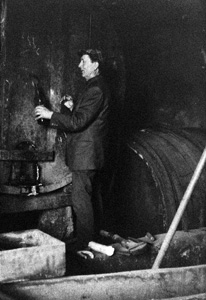
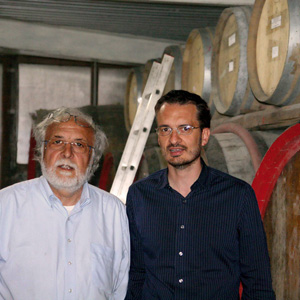
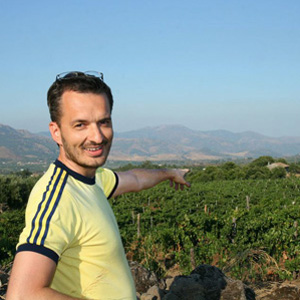
Salvatore Calabretta in the old cellar, Massimo e Massimiliano Calabretta in the new cellar, Massimiliano in the vineyards
Our cellars are on multiple levels – one which is dug from the volcanic rock,
which maintains perfect temperatures and humidity in natural way. Many large
Slavonian oak casks give us the ability to age our wines traditionally. With
this, natural precipitations of lees and tartaric is possible.
We use small- & medium-sized barrels for the fermentations, but these are not
new.
Little parties of special wines are aged in old barriques, so we have the
oxygenation without a lot of wood
The various types and sizes of barrels we have allows us to separate the wines
from our vineyards until bottling.
Our temperature control system in the winery allows us to keep temperatures constant without the circulation of air. This facilitates natural alchohlic & malolactic fermentations without the addition of commercial yeasts. We believe in the natural elements in the wine, and we try to preserve these native yeast and bacteria in the wine.